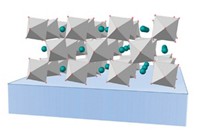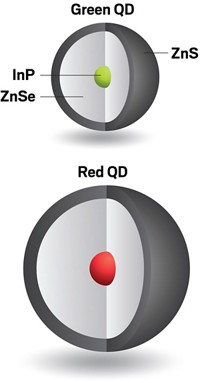Advertisement
Grab your lab coat. Let's get started
Welcome!
Welcome!
Create an account below to get 6 C&EN articles per month, receive newsletters and more - all free.
It seems this is your first time logging in online. Please enter the following information to continue.
As an ACS member you automatically get access to this site. All we need is few more details to create your reading experience.
Not you? Sign in with a different account.
Not you? Sign in with a different account.
ERROR 1
ERROR 1
ERROR 2
ERROR 2
ERROR 2
ERROR 2
ERROR 2
Password and Confirm password must match.
If you have an ACS member number, please enter it here so we can link this account to your membership. (optional)
ERROR 2
ACS values your privacy. By submitting your information, you are gaining access to C&EN and subscribing to our weekly newsletter. We use the information you provide to make your reading experience better, and we will never sell your data to third party members.
Materials
How single-crystal charge carriers could improve solar cells
Researchers create the first single crystals of spiro-OMeTAD, a popular material in next-generation solar cells
by Matt Davenport
May 2, 2016
| A version of this story appeared in
Volume 94, Issue 18
Emerging solar-cell technologies got a boost last year thanks in part to Osman M. Bakr and his team at King Abdullah University of Science & Technology when the researchers developed single crystals of light-harvesting materials. The researchers are now double-dipping in their single-crystal strategy to try and further improve photovoltaics by turning their attention to a different component of the solar-cell anatomy: hole-transport materials. These materials conduct electrically positive charge carriers, known as holes, in both perovskite and dye-sensitized solar cells (see page 30). The most popular hole-transport materials are amorphous thin films prepared from a polyaromatic molecule called spiro-OMeTAD, Bakr says. His team created single crystals of spiro-OMeTAD by dissolving it in dimethyl sulfoxide and then slowly exposing the solution to vapors of an antisolvent, methanol, to coax crystallization (Sci. Adv. 2016, DOI: 10.1126/sciadv.1501491). This approach allowed the researchers to report the crystal structure of spiro-OMeTAD for the first time, they say. The team further showed that the molecular packaging within a crystal allows the material to conduct holes far better than amorphous thin films currently in use.





Join the conversation
Contact the reporter
Submit a Letter to the Editor for publication
Engage with us on Twitter